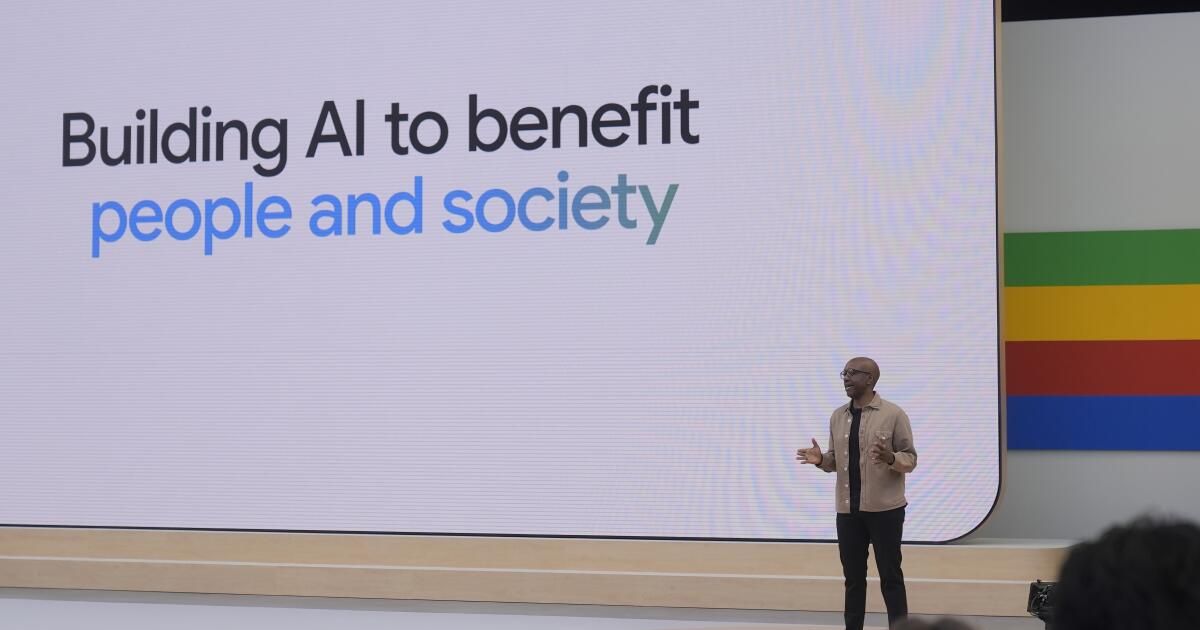Every time someone uses ChatGPT to write an essay, create an image, or get advice on how to plan their day, the environment pays a price.
It is estimated that a query on a chatbot using artificial intelligence requires at least 10 times more electricity than a standard Google search.
If all Google searches similarly used generative AI, they could consume as much electricity as a country the size of Ireland. calculated by Alex de Vriesthe founder of Digiconomist, a website that aims to expose the unintended consequences of digital trends.
However, someone using ChatGPT or another AI application has no way of knowing how much power their questions will consume as they are processed in tech companies' massive data centers.
De Vries said the growing energy demands of AI technologies will undoubtedly require the world to burn more climate-warming oil, gas and coal.
“Even if we manage to power AI with renewable energy, we have to be aware that its supply is limited, so we will use more fossil fuels in other areas,” he said. “The end result of this is an increase in carbon emissions.”
AI is also thirsty for water. ChatGPT drinks about a 16-ounce bottle in just 10 queries. Shaolei Ren calculatesassociate professor of electrical and computer engineering at UC Riverside, and his colleagues.
The increasing consumption of energy and water by AI has Concerns raised in California and around the world. Experts have detailed how it could stall the transition to green energy, while increasing consumers’ electricity bills and the risk of blackouts.
To try to avoid such consequences, De Vries, Ren and other experts are calling on technology companies to reveal to users how much energy and water their queries will consume.
“I think the first step is to have more transparency,” Ren said. AI developers, he said, “tend to be secretive about their energy use and their water consumption.”
Ren said users would be told on websites where they are asked to type in their queries how much energy and water their requests will require. He said this would be similar to how Google now tells people searching for airline flights how much carbon emissions the trip will generate.
“If we had that knowledge,” he said, “we could make more informed decisions.”
Data centers — huge warehouses of computer servers that support the internet — have long been big energy consumers, but the specialized computing chips needed for generative AI consume much more electricity because they are designed to read enormous amounts of data.
The new chips also generate so much heat that even more energy and water are needed to keep them cool.
Although the benefits and risks of AI are not yet fully understood, companies are increasingly incorporating the technology into existing products.
In May, for example, Google announced that it was adding what it called “AI Summary” to its search engine. Whenever someone types a question into Google Search, the company’s AI generates an answer from the search results, which is highlighted at the top.
Not all of the answers generated by Google's AI have been correct, including when it told a user that Add Elmer's glue to the pizza sauce to prevent the cheese from sliding off the crust.
But those who don't want such AI-generated responses or want to avoid additional energy and water use can't turn off the feature.
“At this time, the user does not have the option to opt out,” Ren said.
Google did not respond to questions from The Times.
OpenAI, the company that created ChatGPT, responded with a prepared statement but declined to answer specific questions, such as how much energy and water the chatbot used.
“AI can be very energy intensive, so we are constantly working to improve efficiency,” OpenAI said. “We carefully study the best use of our computing power and support our partners’ efforts to achieve their sustainability goals. We also believe that AI can play a key role in accelerating scientific progress in discovering climate solutions.”
Three years ago, Google promised to achieve “net zero” – that is, its greenhouse gas emissions would be equal to those it eliminated – by 2030.
The company is not making progress toward that goal. In 2023, its total carbon emissions increased by 13%, the company revealed in A July reportSince 2019, its emissions have increased by 48%.
“As we integrate more AI into our products, reducing emissions may prove challenging due to the increasing energy demands resulting from the increased intensity of AI processing,” the company said in the report.
Google added that it expects its emissions to continue to rise before declining at some point in the future, although it did not specify when that might happen.
The company also revealed that its data centers consumed 6.1 billion gallons of water in 2023, up 17% from the previous year.
“We are committed to developing AI responsibly by working to address its environmental footprint,” the report states.
De Vries said he was disappointed that Google had not disclosed in the report how much AI was adding to its energy needs. The company said in the report that such a “distinction between AI and other workloads” “would not be meaningful.”
By not separately reporting AI energy usage, he said, it's impossible to calculate how much more electricity Google Search was now using with the addition of AI Overviews.
“While they are able to provide the required information,” he said, “they are now withholding it.”
Fact Sheet
Towards a more sustainable California
Receive Boiling Point, our newsletter exploring climate change, energy and the environment, and be part of the conversation – and the solution.
You may occasionally receive promotional content from the Los Angeles Times.












